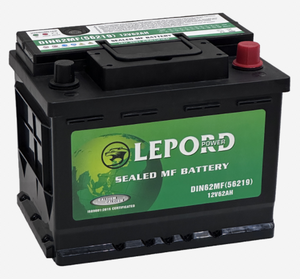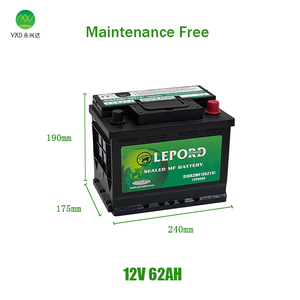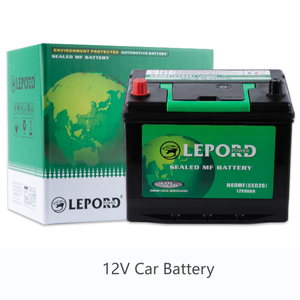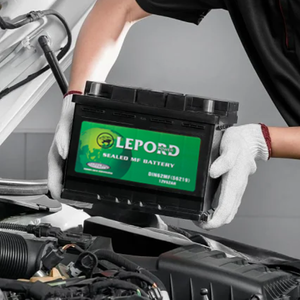(1940 products available)





























































































































































































The Optima battery, a leader in high-performance automotive batteries, comes in several varieties to meet various needs and preferences. The batteries are designed with a unique spiral cell technology, which provides better performance and a longer lifespan than standard batteries. The Optima batteries are divided into three main categories based on the color-coded case, which is also indicative of their function. The Red Top batteries are ideal for high cranking power and starting applications. The Yellow Top batteries are designed for deep cycling and are suitable for hybrid vehicles, while the Blue Top batteries are specialized for marine and deep cycle applications. Let’s look at the different types of Optima batteries in detail.
The Blue Top batteries are known for their deep cycling capabilities, which allow them to be discharged and recharged frequently without damaging the battery. As a result, they can provide power for onboard electronics, such as lights, pumps, and sound systems, for extended periods. The Blue Top batteries also have high CCA ratings, making them suitable for marine applications, such as starting boat engines and powering onboard electronics.
The specifications of Optima batteries are important to consider because they affect their performance in different situations. The rating system measures how much power a battery can give out and how long it can last.
Cold Cranking Amps (CCA):
The cold crank rating shows how much power the battery can give out at once, like when starting a car. A higher rating means the battery can start the car even when it is really cold outside. Optima batteries have a cold crank rating between 800 and 1,000 CCA.
Cranking Amps (CA):
The cranking rating is for how much power the battery can give out and how long it can last. A higher rating means the battery can give out power for a longer time. Optima batteries have a cranking rating between 900 and 1,100 CA.
Reserve Capacity (RC):
The reserve capacity is how long the battery can keep powering important things in the car if it goes dead. A higher reserve capacity means it can power those things for a longer time. The reserve capacity of Optima batteries is between 120 and 150 minutes.
Depth of Discharge (DoD):
The depth of discharge shows how much of the battery's power has been used up. With Optima batteries, the depth of discharge can be used up to 80% of its total power.
Optima batteries are maintenance-free. However, with regular maintenance, the lifespan of the battery can be prolonged. Here are some tips for maintaining Optima batteries:
Here are some important factors to consider when choosing an Optima battery:
Power Requirements
According to the needs of the electronics used in the car, the total power supply must be calculated. For optimal battery selection, it is important to understand the starting power (CCA) and the capacity for deep discharge (Ah) of each battery.
Size and Fit
It is necessary to measure the available space for the battery installation, taking into account the length, width, and height of the battery. In addition, it is necessary to check whether the mounting options and terminal locations of the chosen battery are compatible with the vehicle.
Climate Conditions
In regions with extremely low temperatures, batteries with higher starting current and CCA ratings are necessary. For hot climates, batteries with lower self-discharge rates and better resistance to corrosion should be chosen.
Usage Type
It is important to define the type of use of the vehicle. If the vehicle is used for long-distance travel, a battery with a high capacity for deep discharge must be selected. For frequent short trips, a battery with a high starting current is necessary.
Optima Battery Technology
Depending on the needs of the vehicle, it is necessary to select the appropriate technology: Red Top batteries are ideal for vehicles with petrol engines, while Yellow Top batteries are more suitable for cars with diesel engines and a large number of electrical consumers. Blue Top batteries are perfect for marine applications and vehicles with additional electrical equipment.
Budget
Optima batteries are more expensive than conventional batteries, but their reliability, durability, and performance should be considered as long-term investments. It is necessary to choose a battery that meets the needs and fits the budget.
Brand Reputation and Reviews
Before buying, it is recommended to read reviews and recommendations of other users, as well as pay attention to the awards and recognitions of the Optima brand.
When the Optima car battery dies, it needs to be replaced as soon as possible. Here's how to replace it:
Gather the necessary tools
Before starting, gather the tools needed for the replacement. This includes a 10mm socket or wrench, battery terminal puller, and gloves. The gloves are important for safety. They protect the hands from battery acid and other hazards.
Safety first
Before starting the replacement, ensure that the engine is turned off. Disable the battery by removing the negative terminal first. This reduces the risk of short circuits. Wear protective goggles to shield the eyes from sparks or acid splashes. Ensure the work area has good ventilation to disperse any harmful gases that may be emitted by the battery.
Remove the old battery
Start by loosening the clamp that holds the battery in place. This makes it easier to remove the battery. Use a 10mm socket or wrench to remove the bolts from the battery terminals. Then, use a battery terminal puller to disconnect the terminals from the battery. If the terminals are stuck, the terminal puller comes in handy.
Clean the battery cables
Once the old battery is removed, clean the battery cables. Use a wire brush to remove any corrosion or dirt that has built up on the cables. This ensures that the new battery makes good contact with the cables.
Prepare the new battery
Before installing the new Optima battery, ensure that it is properly charged. Check the level of the electrolyte solution and top it up if necessary. The electrolyte solution in the battery should be at the level specified by the manufacturer. This ensures that the battery works properly and lasts a long time.
Install the new battery
Place the new Optima battery in the battery tray and secure it with the clamp. Then, connect the battery cables to the new battery. Connect the positive cables first, followed by the negative cables. This reduces the risk of short circuits.
Check for leaks
After installing the new battery, check for leaks. Ensure that all connections are tight and secure. This prevents leaks and ensures that the battery works properly.
Dispose of the old battery
Once the new battery is installed, dispose of the old battery properly. Take it to a recycling center or hazardous waste facility. Do not throw the old battery in the trash. This is because the battery contains harmful materials that can pollute the environment.
Q1: How long does an Optima battery last?
A1: An Optima battery can last up to 2 to 3 years, depending on various factors such as usage, maintenance, and environmental conditions.
Q2: Can Optima batteries be recharged?
A2: Yes, Optima batteries can be recharged using a compatible battery charger. However, it is important to follow the manufacturer's instructions for recharging.
Q3: Are Optima batteries maintenance-free?
A3: Yes, Optima batteries are considered maintenance-free. They are sealed and do not require regular maintenance like fluid level checks or topping up.